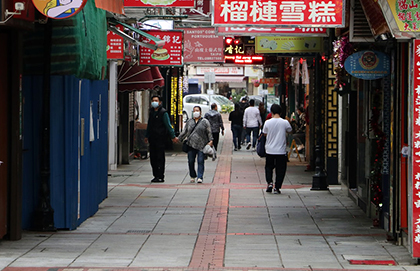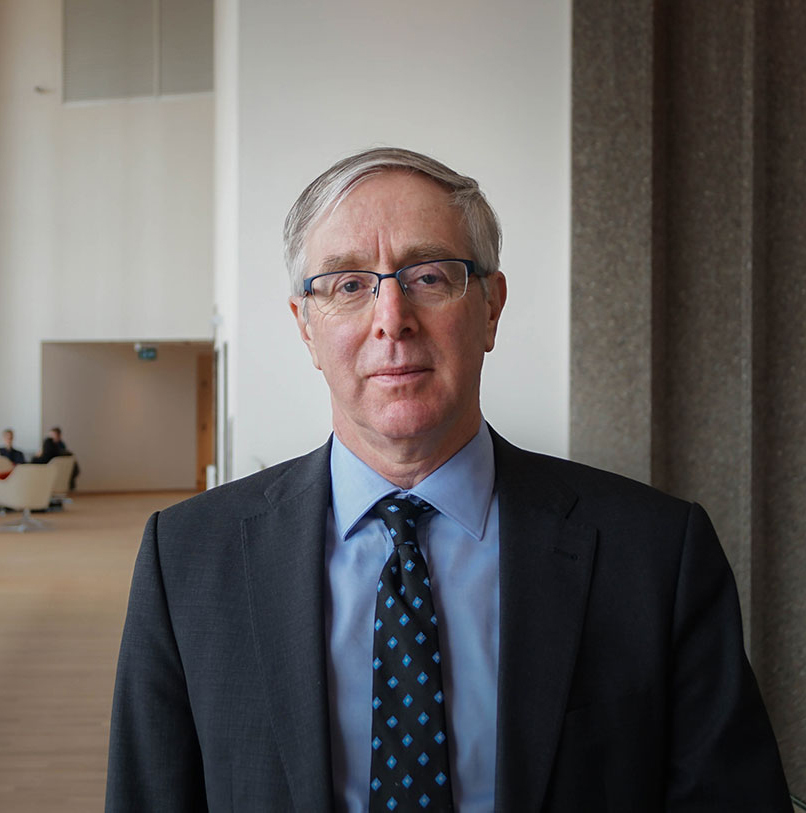Four decades ago, The New Republic’s editor Michael Kingsley gained a place in the journalistic wit hall of fame by declaring “Worthwhile Canadian Initiative” to be the most boring headline in history.
The Bloomberg news service might have gone Kingsley one better today with its headline on a news in brief roundup of novel coronavirus alarms and calamities worldwide.
The boldface teasers over single-paragraph summaries included “Italy Closes Schools, Universities Nationwide,” “Egypt Bars Qataris From Entry,” “U.K Coronavirus Cases Jump,” “EU Fears Cascading Effects on Economy From Virus,” “Cases Surge in Iran,” “Israel Quarantines Students, Soccer Fans,” and “Pandemic Could Cost Global Economy $2.7 Trillion.”
Meanwhile, “Canada Creates Virus Committee,” was the rather chill headline for the dear old True North Strong and Free. It topped the terse news that Prime Minister Trudeau has announced the creation of a COVID-19 cabinet committee headed by Deputy Prime Minister Chrystia Freeland.
The pride arising from those four words is their international confirmation of our national character as being calm gusting to dull. There is also blessed reassurance knowing that even the prime minister who has, fairly or unfairly, gained notoriety as fire-eating flamboyant is taking a measured approach to an outbreak that has turned the rest of the planet into an echo chamber of five-alarm banshees.
It’s not that we’re all flashing our special brand of Canadian smugness at being, so far, relatively untouched by the novel coronavirus. Au contraire. A story Tuesday from Canadian Press noted Canadian scientists are “at the forefront” of a global research response to deal with the virus that has gripped the globe since first emerging a few weeks ago in one primary city in one province in China.
Even so, one scientist dismissed “speculative” attempts to predict how, and how far, the virus will spread. Another expressed amazement at the speed of the epidemiological response. Already it’s apparently become clear that this coronavirus uses the same method as SARS (Severe Acute Respiratory Syndrome, also a coronavirus) to enter cells. The discovery raises the hope that the same medicines uses to fight SARS can be turned against this new variant. Much of the knowledge comes from previous work done largely in Toronto, making such research a worthwhile Canadian initiative indeed.
As a result, although the number of people infected around the world topped 90,000 this week, the disease itself seems highly likely to claim far fewer lives than epidemics or pandemics of previous eras. The death-to-infection ratio is currently reported to be 3.4 per cent, a third of the 9.6 per cent for SARS just almost two decades ago.
That’s not nothing, of course. Words attributed to Stalin that one death is a tragedy while one million deaths are a mere statistic have always been a brutal lie. Each of the approximately 3,000 deaths from the new coronavirus so far means the terrible end of an innocent life, and represents a hole torn in family, a circle of friends, a community.
But the relatively low death toll does support hope that Canadian and global research, combined with far better anti-pandemic preparation than the world has ever seen, will keep the grimmest outcome minimal. Such grounds for hope don’t discredit the rather wild media bellringing that followed initial news of outbreak. Looking at it through journalistic eyes, I for one have been extremely uncomfortable with the way, for example, the “spread” of the novel coronavirus has been reportedly as breathlessly as if it were unavoidably fatal.
Ease of contemporary travel has clearly contributed to the initial “spread.” But those who’ve been diagnosed and sent home to recover with a few days of self-quarantine are clearly not carrying an equivalent to, say, the typhus bacteria that ripped through Irish coffin ships bound for the new world in 1847. Failure to make that distinction clear – to let “spread” suggest “fatality” – is not just a matter of clarity of language. It’s a yellow caution line between difficult but essential reporting and a quasi-gleeful media fearmongering.
Coronavirus might well spread faster than a rumour of free beer on an August afternoon in Arizona. But fear arising from falsehood, to adapt the old saying, can be halfway around the world before the balancing truth can get its boots on. I know which one I consider worse, and not just because I think it is way past time to lower the Trump-era anxiety level.
Panic’s primary destructive force lies in its power to distract. Even here in preternaturally cool Canada, we have been distracted during recent weeks by rising alarm levels over the novel coronavirus sweeping down upon us from somewhere “out there.” Yet here at home we have treated the very serious issues around Indigenous rights and struggle as a matter of irritating personal inconvenience and mounting national frustration. The response should have been exactly the inverse.
My bold prediction is that, should the current epidemiological course hold, we will very likely have forgotten by the second beer of the first hot day in August the name of the “spreading pandemic” that now seizes us so. But the snarling from early February until this week of rail transportation across the country, with all the knock-on effects that comprises, should endure as a massive wakeup call to just how vulnerable Canada’s infrastructure is to Indigenous disaffection.
If we were paying full attention, we would realize the proper response isn’t to try to inoculate ourselves with denial and derision where Indigenous claims are concerned. We would see that the true threat to the True North Strong and Free is not a novel airborne virus from outside our borders. It’s grounded in our own history of deceiving Indigenous people and ourselves about the rule of law that governs the relationship between First Nations and broader Canadian society. We would be pressing the federal cabinet and, indeed, provincial governments as well, to turn reconciliation from a mealy-mouthed milksop mumble at public gatherings into the reality of rights restored. We would see that at least the intentions of the draft agreement signed with the Wet’suwet’en people in northern British Columbia is a worthwhile Canadian initiative in that regard.
Tomorrow, I’ll be talking to three voices who can explain why… and how we go from there to finding a cure for two centuries and more of Indigenous-Canadian ill feeling.






